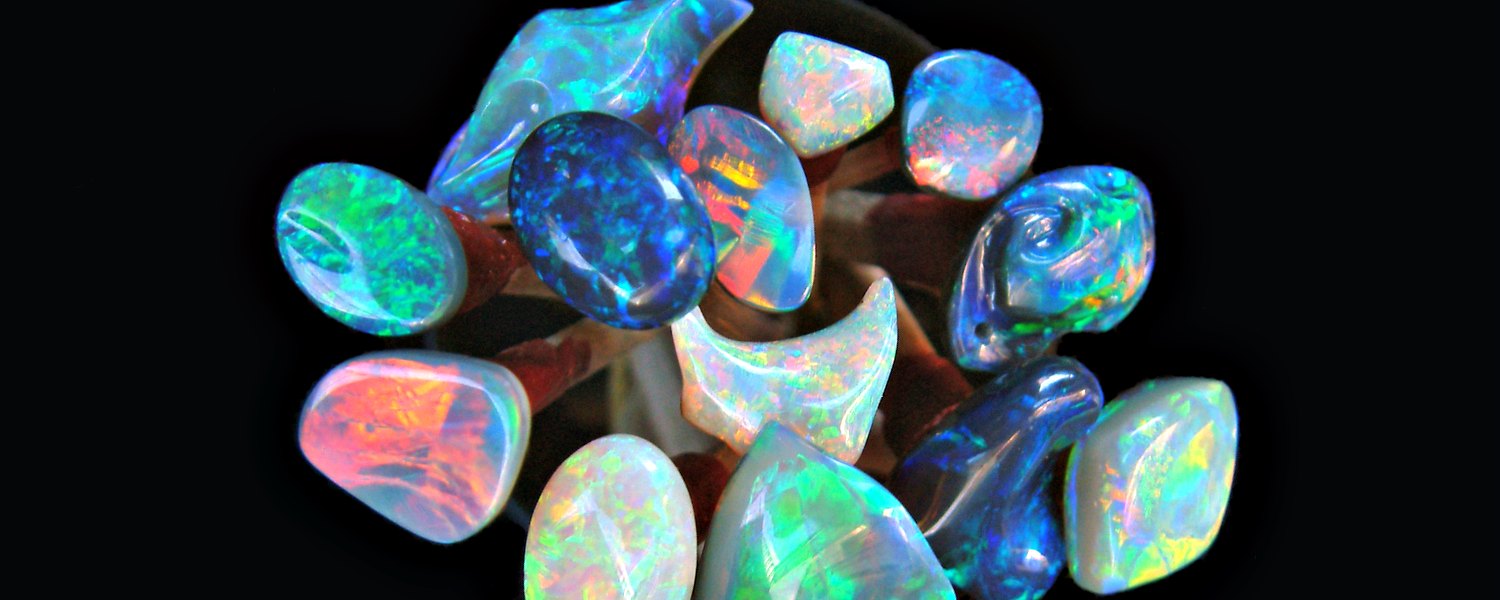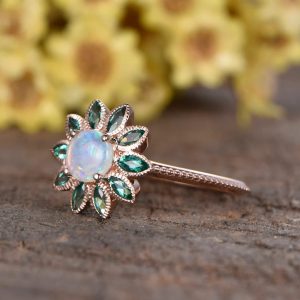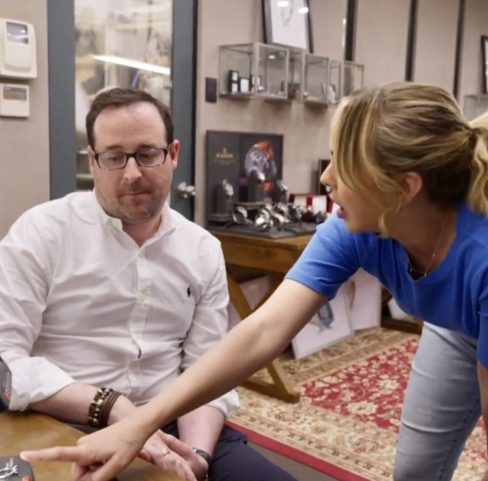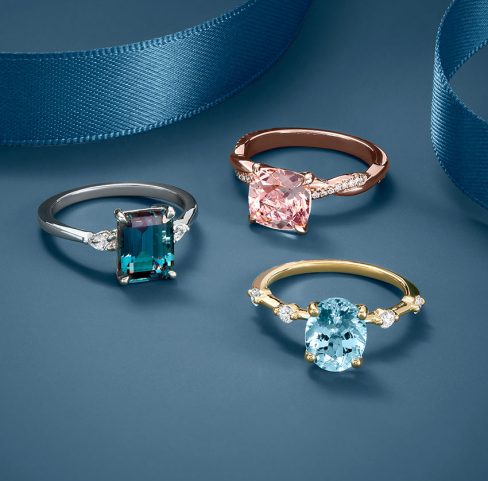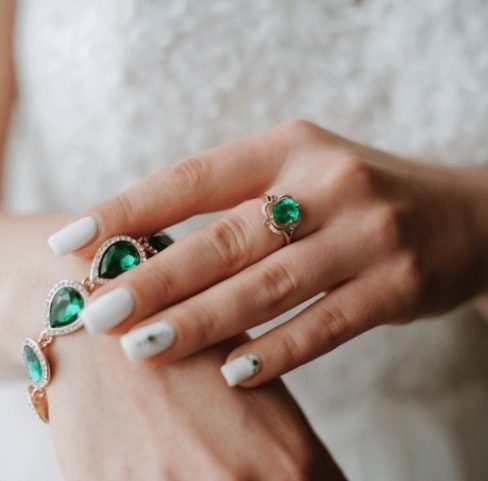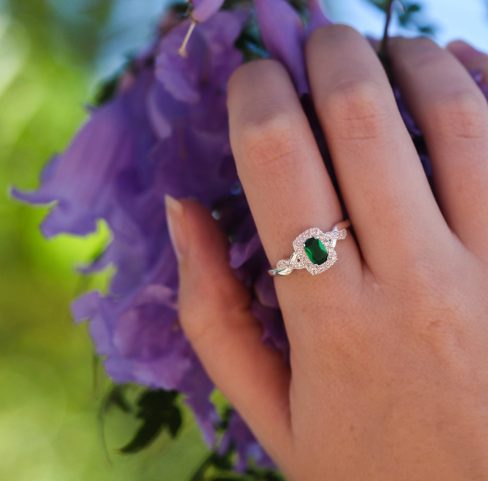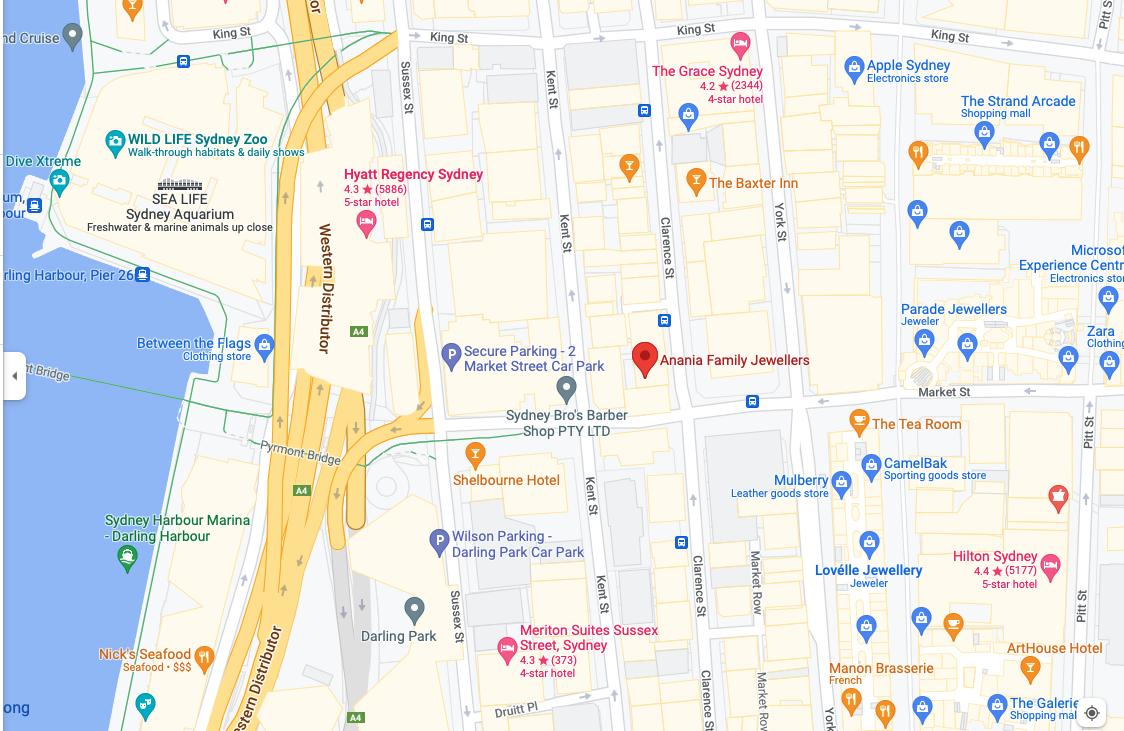Rubies are red, diamonds have no hue — but what about opals?
The magic has fascinated us for centuries. The Romans christened the opal as “Cupid stone”, associating it with hope and purity. The early Greeks, meanwhile, believed that opals held the power of prophecy. Arabian folklore would tell you that the gems came from lightning, while Aboriginal Australians say they sprung from the point where rainbows touched the earth.
The mythology of opals is clearly as colourful as the stones themselves, but just as worth discovering is their gemmology. Below, we explain the origin and originality of opals.
Not like other gems
Diamonds, sapphires, rubies, amethysts and countless other gemstones are known as minerals. They have a fixed chemical composition, allowing them to form crystals. Opals, on the other hand, are mineraloids. Their composition of water and silica isn’t strictly defined — hence their amorphous forms.
Here’s another anomaly: opals don’t sparkle or glitter. Instead, their appeal lies in a phenomenon known as “play-of-colour”. As light passes through the tiny spheres of silica in an opal, it is split into a spectrum of colours. (This prismatic effect only occurs in rare, precious opals, though. Common opals are marked by their milky, cloudy appearance instead.)
In other words, the precious opal is truly the individualist’s gemstone. No two are the same, and a single one can look different depending on the angle.
Australia’s National Treasure
The formation of opals gets off to a rocky start. They occur naturally when water and silica, having seeped into cracks of the earth and the crevices of rocks, are solidified. Sometimes, the iridescent gems are even found in wood, shell and bone.
All this talk of rocks should call to mind Australia. The dry continent indeed has a lot more to offer than coffee. It’s also home to the world’s biggest opal fields. Since the late 1800s, Australia has established itself as the go-to producer of high quality opals — especially the rarest one of them all, the black opal.
While most gemstones are prized for their brilliance, the black opal is precious precisely because it’s dark. It provides the perfect contrast to bring out the opal’s magical play-of-colour, in the same way that the galaxy makes the best backdrop for nebulae.
These cosmic stones are mined in Lightning Ridge, a tiny outback town in New South Wales. They come in various tones graded by black opal colour guides, with N1 being the darkest (thus the most valuable) and Hi being the lightest.
Australia is also home to the world’s only boulder opals, which are mined in Queensland. These form in veins in ironstone boulders, and are often cut with the host rock attached. As the gem material is intimately intertwined throughout a rock, they’re considered as type of matrix opal. It also makes boulder opals much more durable than black opals, while resembling them in their darkness. Little wonder that they’re second on the list of precious opals.
A future in Ethiopia?
Although 95 per cent of opals have been mined down under, the kaleidoscopic gemstones are also produced elsewhere. Fire opals, ranging in colours like yellow, orange and red, are a vivid variety native to Mexico.
Honduras, located in the heart of Central America, also has its own black opal, which is really a type of matrix opal that forms in the fissures of volcanic black basalt. Unlike the ones from Australia, however, the Honduran matrix opals have a high water content. This makes them prone to crazing — when an opal loses moisture from its structure and cracks — especially in dry or hot conditions.
As far as opals are concerned, Ethiopia’s offerings are still new; there isn’t an industry-accepted way of grading them yet. Still, the East African country might soon see a growing market for their opals, especially now that high quality black opals have become even rarer to find in Australia.
Keeping Opals Fresh
Because they lack a crystal structure, opals are considerably soft compared to other gemstones. They score between 5 and 7 on the Mohs scale of hardness. That also means that they can’t be faceted like a diamond or a sapphire. Instead, they’re often presented as domed cabochons, or in rough forms, in the case of matrix opals.
The water in the stones also makes them sensitive to temperature changes, giving them a tendency to crack and craze.
She’s one of many jewellery designers that have incorporated the opal, with all of its fragility and unpredictability, into her creations. In recent years, Chopard, Cartier and Gucci have likewise celebrated the opal in their jewellery pieces. And with its shapeshifting nature, the opal will certainly continue to mesmerise the jewellery world.
Individual opals can vary widely in appearance and quality. As diverse as snowflakes or fingerprints, each gem can differ noticeably.
There are three main aspects of an opal’s quality:
- Colour—Background colour and play-of-colour
- Pattern—Arrangement of play-of-colour
- Clarity—Transparency and quantity of inclusions
How to evaluate an Opal
Opal evaluation should be done under controlled lighting on a dark background. Rotating the opal against a background helps when you’re determining its type and evaluating its play-of-colour and cut.
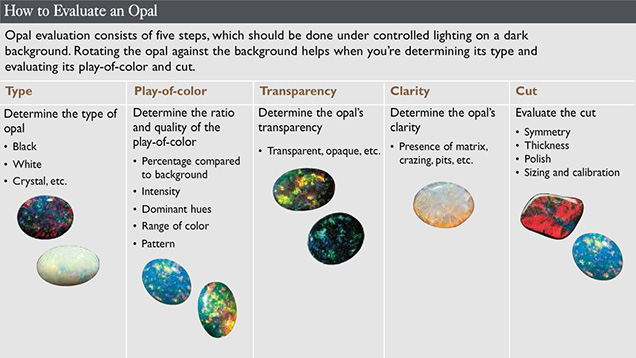
The Ten Steps of Evaluating an Opal
- Determine the type of opals
- Is it a black opal, white opal, crystal opal, etc.?
- Determine the ratio and quality of its play-of-colour:
- Consider the percentage of play-of-colour compared to background colour, its intensity, dominant hues, range of colour and pattern.
- Determine the opal’s transparency:
- Is it transparent, semi-transparent, translucent, semi-translucent or opaque?
- Determine the opal’s clarity:
- Look for the presence of matrix, crazing, pits, etc.
- Evaluate the opal’s cut:
- Consider the opal’s symmetry, thickness, polish, sizing and calibration.
Opal Colours
Opal hues can range across the spectrum. An opal might display a single colour, two or three colours, or all the colours of the rainbow. Opal displays background colour in addition to play-of-colour. Background colour—also called body-colour—is caused by the suspension of tiny impurities within opal’s silica spheres.
Opals are often divided into types based on background colour. Even though there are many different categories for opals, here are the main five types:
Black Opal
All other quality factors being equal, many buyers favour the dark background colour of black opal. This is partly because play-of-colour tends to stand out attractively against a dark background. The contrast of play-of-colour to body-colour makes black opals very popular. Additionally, black opals are considered to be the rarest (white opals are more common).
White Opal
An opal with a translucent to opaque white and other light colour backgrounds (body-colour) with play-of-colour is called white opal.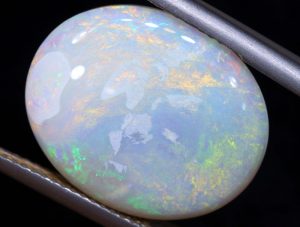
Fire Opal
Fire opal is transparent to translucent with a body-colour that is usually yellow, orange or red. This material, which might show play-of-colour, is also known in the trade as “Mexican opal” or “Mexican fire opal”.
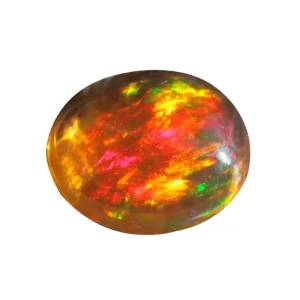
Boulder Opal
Boulder opal is translucent to opaque opal with play-of-colour within a host rock. Thin layers of opal exist within the host rock (called matrix). The opal is cut with the matrix attached and is part of the finished gem.

Crystal and Water Opal
Crystal opal is transparent to semitransparent with a clear background. This type of opal can show excellent play-of-colour. Water opal might or might not display play-of-colour. If it does show play-of-colour, it is faint and covers only small portions of the gem.
Play-of-colour might be the most spectacular aspect of an opal’s appearance. No matter the colour or combination of colours, play-of-colour must be vivid to command a high rating. In other words, opal lovers prize bright play-of-colour over faint play-of-colour.
Secondary in importance to play-of-colour’s strength is its range. If an opal’s play-of-colour is not just bright, but also ranges across the entire spectrum, it’s very rare and valuable. Not every precious opal, however, sparkles with every colour of the rainbow. In some, the play-of-colour consists of just one main colour and two or more secondary colours.
Desirable play-of-colour is further broken down by the colours themselves. Traditionally, red is considered the best prominent colour, orange the next most desirable, followed by green. However, favoured colours can vary with fashion or personal preference.
In addition, an opal’s play-of-colour can change along with the viewing angle or type of light. For example, red might dominate in the same portion of an opal cabochon where blue dominates when it’s viewed from a different angle.
The most valuable opals display play-of-colour from all angles.
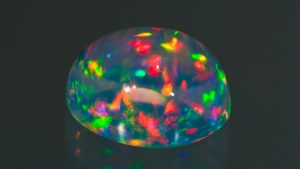
Opal Patterns
Pattern describes the arrangement of an opal’s play-of-colour. Like the shapes you see in the clouds, play-of-colour takes many forms.
Common terms for play-of-colour patterns include:
- Pin-fire or pinpoint: Small, closely set patches of colour
- Harlequin or mosaic: Broad, angular, closely set patches of colour
- Flame: Sweeping reddish bands or streaks that shoot across the stone
- Peacock: Mainly blue and green
In general, connoisseurs prefer large, closely arranged patches of colour over tiny, scattered dots. As with any play-of-colour, no matter what the pattern, colours must be bright for the stone to be valuable.
In addition to the arrangement and shape of the play-of-colour patches, buyers must consider extinction, or “dead spots,” when evaluating pattern. A dead spot is an area of the gem in which no play-of-colour appears and only background colour is visible. Dead spots detract from opal value, especially if there are several of them.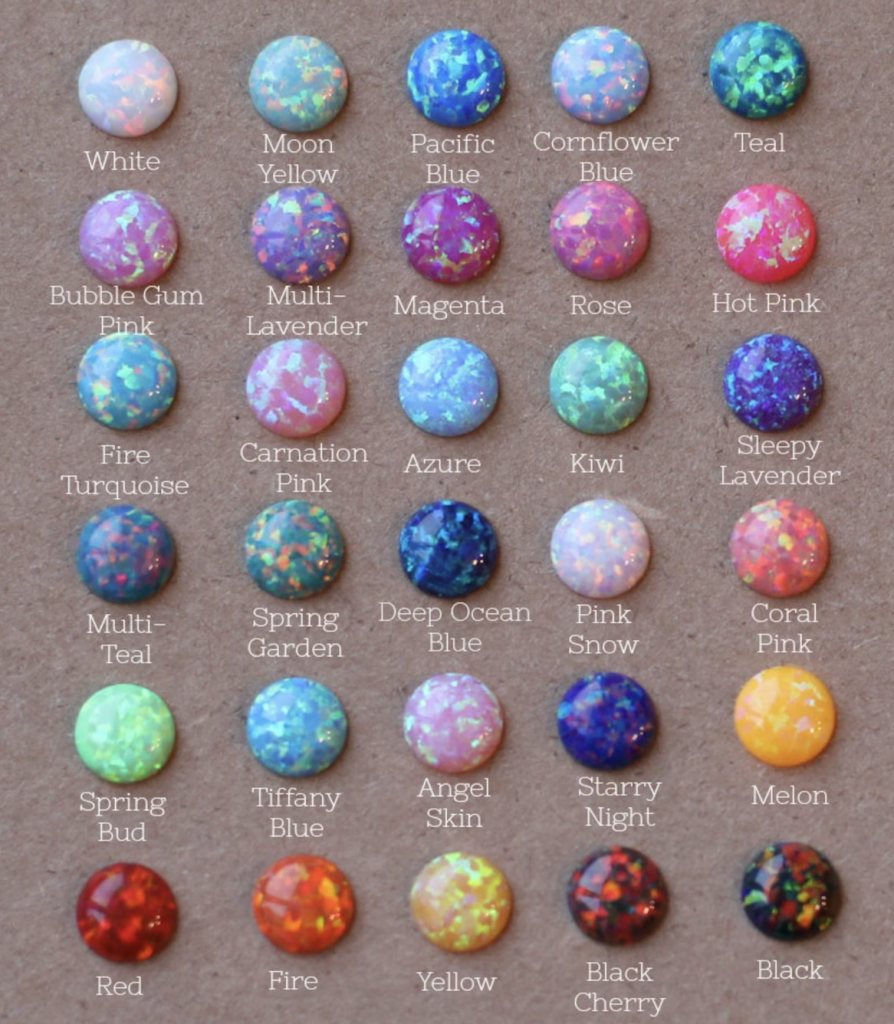
Opal Clarity & Transparency
With an opal, clarity is its degree of transparency and freedom from inclusions. An opal’s clarity can range all the way from completely transparent to opaque. Experts prize different levels of clarity for different opal types. For example, in crystal opal, experts admire transparency, while in black opal they prefer an opaque background. Each provides the best background for displaying play-of-colour in its individual opal type. A cloudy or milky background colour lowers the value of any opal. It makes the gem less attractive, and it can sometimes signal a lack of stability.
There are various types of opal clarity characteristics that affect value. Opals, like other gems, can have fractures, or pits and other surface blemishes. An opal might also contain fragments of its host rock, called matrix. Matrix in a polished opal is usually—but not always—detrimental to its appearance and value. It depends on the type of opal.
If an opal loses moisture, it can lead to crazing: a fine network of cracks that resembles a spider’s web. The moisture loss can be caused by heat or excessive dryness, or by exposure to bright light or direct sunlight. Crazing can be prevented by never displaying opals in places— such as window displays—where they’re exposed to these conditions.
Opal Cutting
The cutter considers an opal’s colour, pattern, and clarity when planning the finished gem. As with many top-quality coloured stones, exceptional opals might not be cut to standard sizes and shapes.
Cutters usually fashion exceptional rubies or sapphires, for example, in a way that saves weight or maximises colour— even if the result is an unevenly proportioned gem. In a similar strategy, opal cutters usually cut top-quality rough to show off its spectacular play-of-colour.
To achieve this goal, cutters might fashion fine opals into large, irregular shapes that keep as much play-of-colour as possible. Designers set these costly one-of-a-kind gems into custom pieces.
On the other hand, cutters typically fashion commercial-quality white opal and assembled opal into standard calibrated sizes, usually ovals.
The cut of a fine opal should be symmetrical. If it’s a cabochon, the dome should be well rounded. Domed surfaces give the best play-of-colour, and make the stone appear vivid from most viewing angles. If the cabochon is flat, it might be vulnerable to breakage, especially during setting into jewellery. If it’s too high, it might be hard to set in jewellery.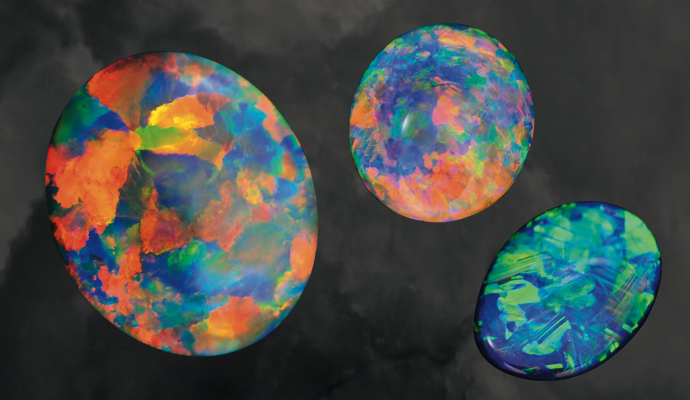
Carat Weight
Opals come in a wide range of sizes and carat weights. Opal has relatively low density compared to many other gemstones so even larger sizes can be comfortable to wear.
Common sizes for many of the opal cabochons set in jewellery are 6×4, 7×5, and 8×6 mm.
The Fire of Australia, a large uncut opal, weighs 998 grams or just under 5,000 carats. South Australia is one of the few places on Earth where opals of this size can be found. Approximately 90% of the world’s opals are from Australia.

Assembled Opals
Opal can be fragile. In solid opal cabochons, the gem material is usually thick enough to withstand everyday wear and jewellery repair without breaking. But with thinner material, manufacturers often have to add a rigid backing for durability.
Assembled opals are fashioned opals with backings. They might include materials like glass that aren’t usually part of gem-quality jewellery, but because they are partly precious opal, they still have value as gems. They sell for only a fraction of the price of boulder opals, but they allow manufacturers to make attractive finished gems from thin opal pieces.
The two common types of assembled opal are the opal doublet and triplet. The doublet is a thin layer of opal cemented to a backing. The backing is often composed of obsidian, dyed black chalcedony, black glass, natural common opal, or plastic. The triplet is a thin layer of opal cemented between a domed top of colourless quartz or clear glass and a backing of obsidian, chalcedony, or black glass.
Identifying Fake Opals
The most common type of synthetic opals are Gilson opals. They are commonly seen on the market and, in some instances, can be hard to distinguish from the natural gemstone. Let’s have a look at how to differentiate them from the natural!
1) The easiest way to differentiate Gilson Opal from natural is by turning the stone sideways! The formation in which Gilson opal is formed is almost like tiny strands all stuck together, forming a block. When looking face forward, the synthetic opal could look strikingly similar to natural but when looking near the side of the stone, these strands are not a formation that naturally occurs in opal.
2) When moving natural opals, the colour play should disperse throughout the stone like water. With Synthetic, the colour will not move throughout the stone, but stay within the same place.

Generally speaking, the rarer the combination of features possessed by a precious opal, the more highly it is valued. Like fine art, or fine wine, or other fine jewels, the final price may also be influenced by personal taste and market conditions.
Want to learn more about opal right at its source? Contact us if you would like to join the mailing list for Anania.



